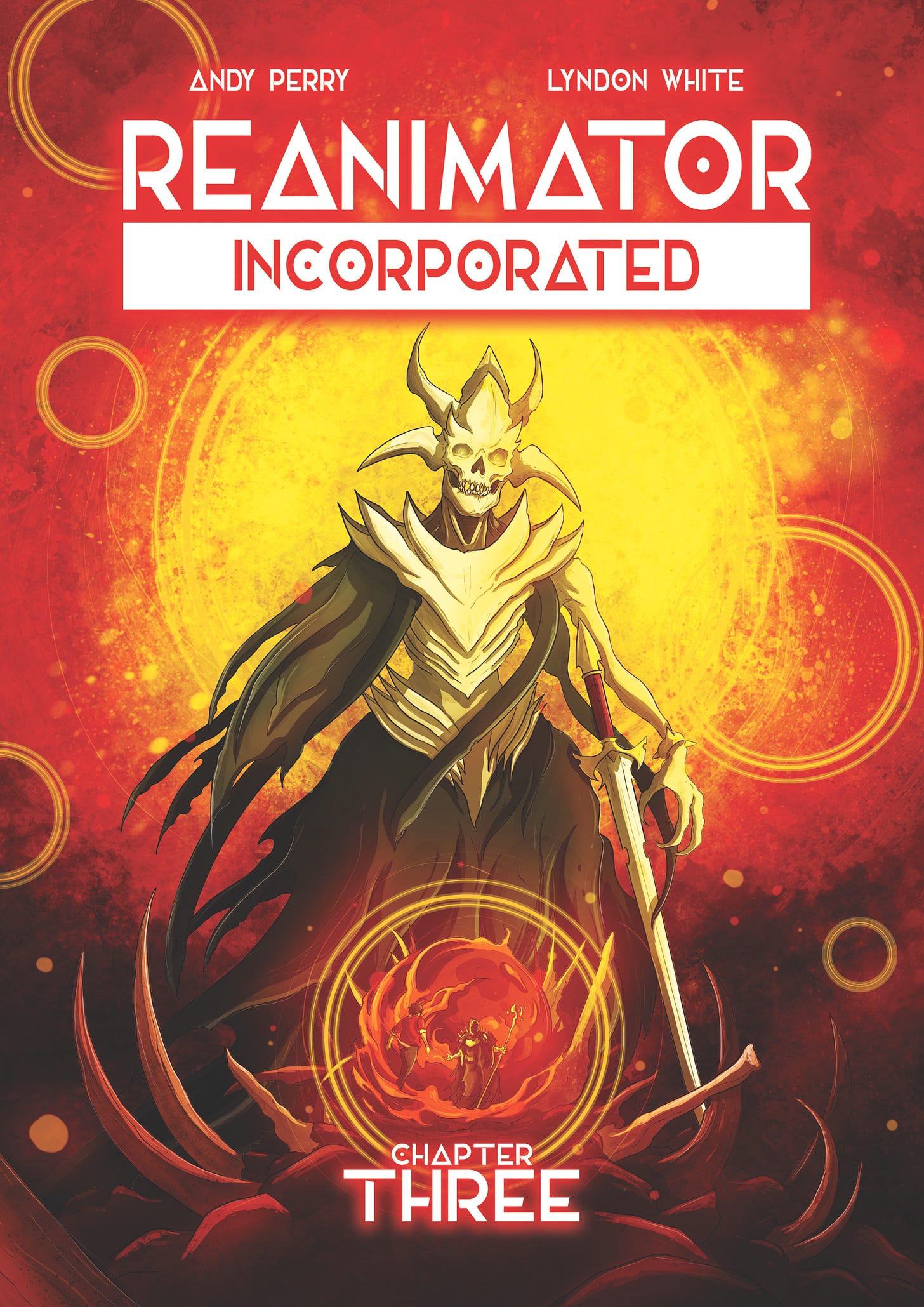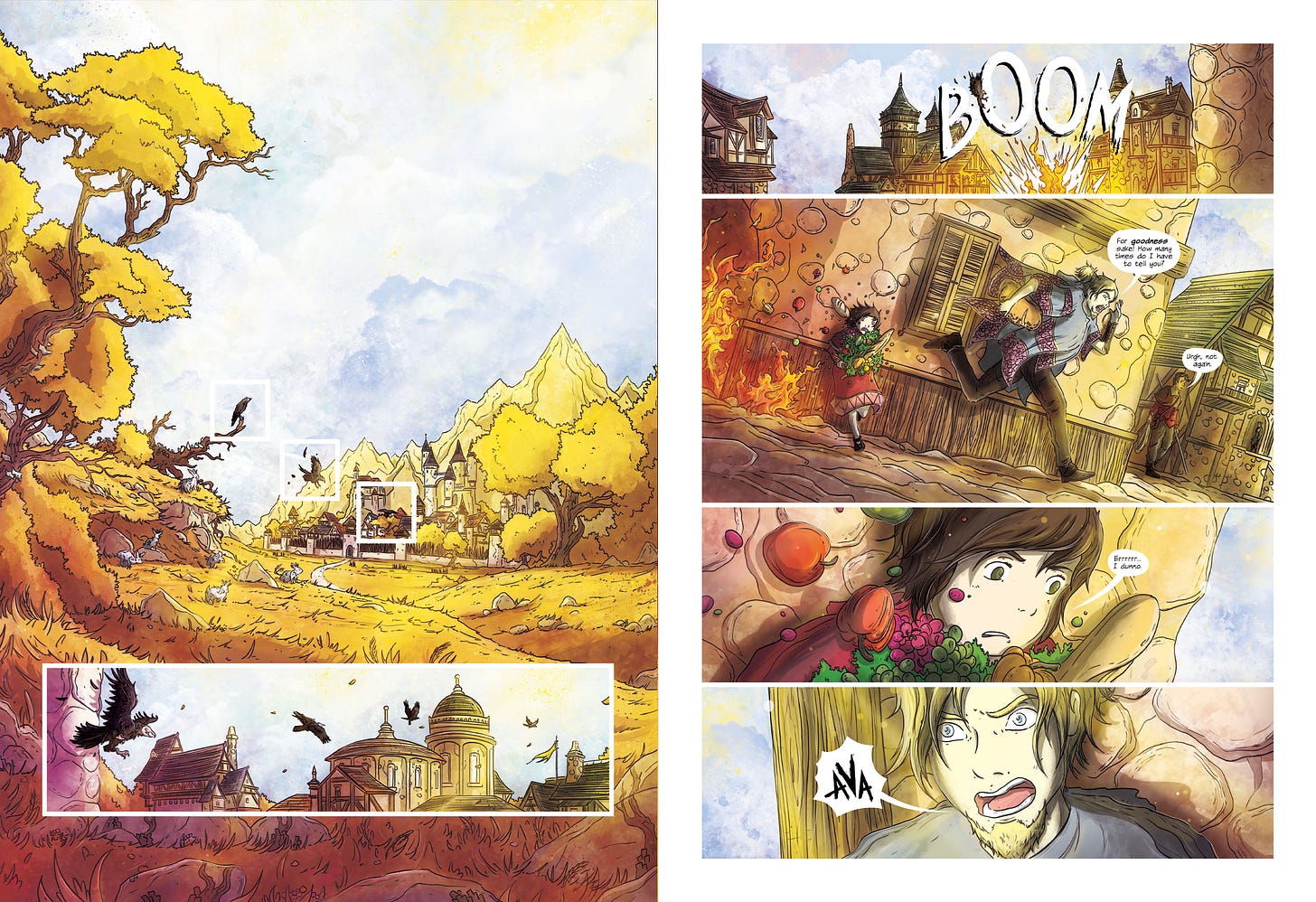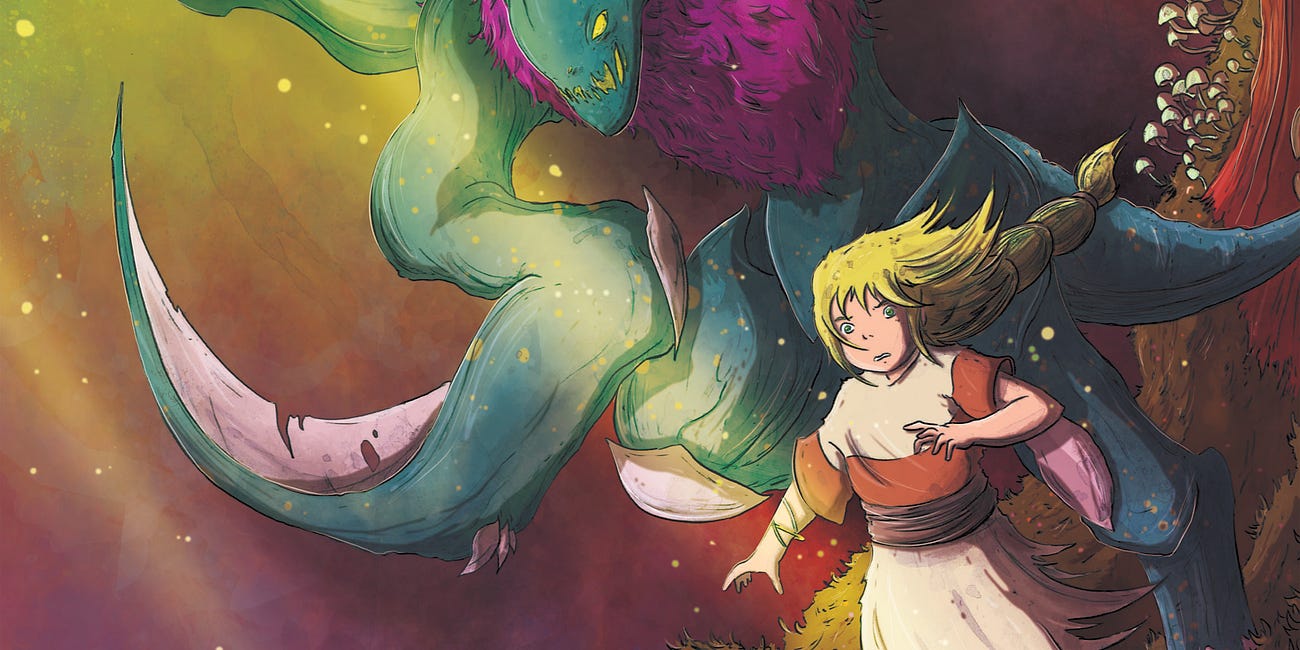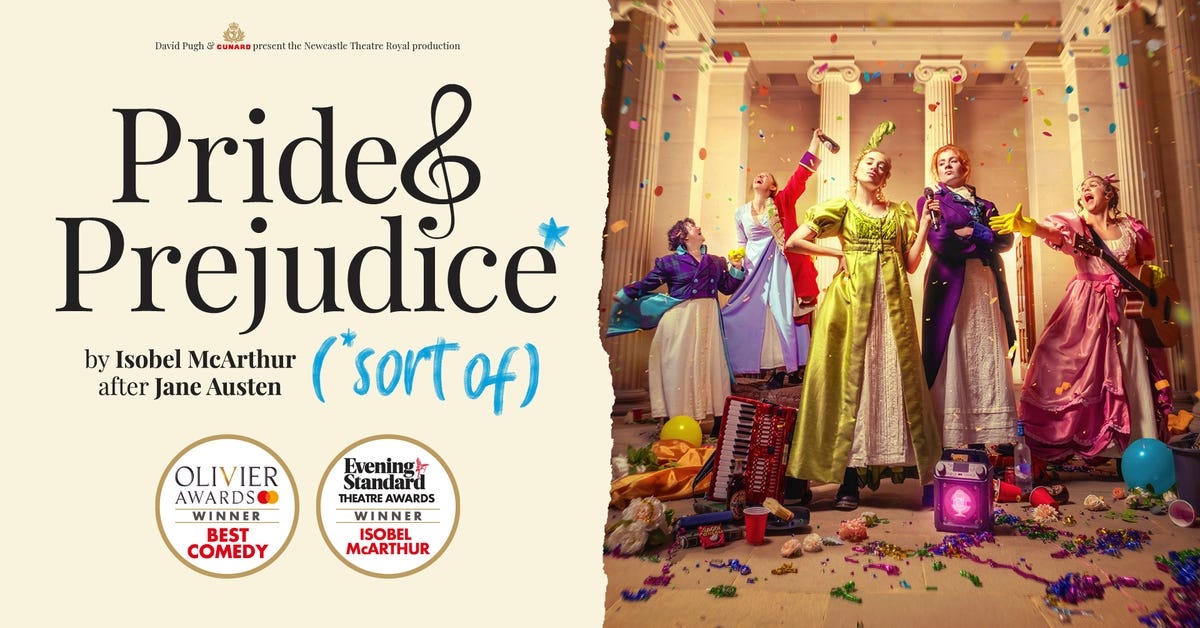An interview with artist Lyndon White
Illustrator, writer and comic-book artist Lyndon is published by Image, Top Cow and Blue Fox comics
This week in IF YOU GO AWAY I interview illustrator, writer and comic-book artist Lyndon White about how he manages to maintain a career creating comics when so many others have failed. Read on past the interview to find out about the brilliant Pride & Prejudice (sort of) and Broken Hearts at Bodmin Jail.
Artist Lyndon White is a First-Class BA (Hons) Illustration for Graphic Novels graduate of Glyndŵr University whose work has been published by Image, Top Cow and Blue Fox Comics. He has run or contributed to over 30 successful Kickstarters and worked with clients including The Tower of London & Historic Palaces, Gatwick Airport and the Lakes International Comic Art Festival.
Lyndon’s greatest achievement to date is his original fantasy graphic novels, Candles, which is published by Cast Iron Books. An all ages story about a sorcerer’s apprentice in a world where everybody is taught never to use magic, Candles echoes the work of Hayao Miyazaki in a gorgeously-illustrated story that only begins to hint at the world Lyndon has created.
As an aside, I feel like I’ve known Lyndon for as long as I can remember, though we definitely met in the 2010s when I was more actively writing and writing about comics and graphic novels. Over time I learned that Lyndon has all the qualities that you could possibly want in a friend and creative collaborator - he’s thoughtful, ambitious, always striving to improve and incredibly receptive to constructive feedback, and more than that, Lyndon is compassionate, patient, and loyal.
We worked together in 2019 on the pitch for a story called NOCTURNAL BLOOM (link further down in this email) and although we never found a publisher, the process of working together was one of the easiest collaborative experiences of my life. If you’re looking for an artist to work with, I can’t recommend Lyndon highly enough.
An interview with Lyndon White
You're one of the rare illustrators I know in the UK who transitioned to creating comics professionally more-or-less full time, right out the gate. Can you tell me a little about how you manage to pay the bills with a focus on comics and comic arts, how you choose which projects to work on, and whether you have thoughts about why you're able to keep the lights on through comic art when so many others can't?
I get asked this a lot actually and I don’t know if there is one exact formula to making it work, but for me it’s all about having a bit of foresight with your work schedule and making sure you have all your ducks in a row (please forgive the analogy in advance). As a freelancer you need to have multiple projects or bits work on the go, aka, your line of ducks. You finish one project, great! Move onto the next duck. You could be the best creator in the world but things will change, a deadline might shift, another duck might pop up from nowhere, a project will get cancelled or generally life might happen and you need to be adaptable to that. It’s really hard if a project gets cancelled but having that next thing to work on, really helps your output and in turn, pay your bills.
When I started out in 2013, I’d just finished my degree. I’d studied Illustration for Graphic Novels at Glyndwr, with Dan Berry as my main tutor and it really helped me hit the ground running. As a student, I’d already exhibited at comic events, done a few bits of freelance work and I’d been working part time, so I already had everything I needed for my own work setup (laptop, drawing tablet, printer, etc). I got made redundant half way through my third year of university which really shifted my plans. Originally planning to work part time and while I tried to find an illustration job, I was now in a position where I had to move back home and figure what to do next.
This was my road to becoming an accidental freelancer. I think anyone who spends three years doing a degree, just wants a job in their field at the end of it. Creators who were much older than me, or started their creative career later in life, all kept saying “go freelance”, “you’re young enough to do it”, “don’t get stuck”, which isn’t exactly what a fresh faced illustrator wants to hear. I got myself an internship at an illustration agency in London, Advocate Art, who were amazing. I was meant to be there for two weeks and ended up there for over two months. The in-house illustration team had a bunch of comic and animation work on at the time and they checked my portfolio, I was doing admin work my first day, storyboards my second and the next week, I was the ghost artist on a series of books, doing inking and colours for a kid’s comic series, being paid a proper rate as freelancer, not an intern. This was before I’d officially graduated and had to take a day off from London to go to Wales and go to my graduation ceremony.
After two months of living the cliché of staying on my friend’s couch, working five days a week at the studio and working on my own book at weekends (my graphic novel, Sparks & the Fallen Star), I then got permission to go home and they’d send me more work. I get reading this, it does come across as being in the right place at the right time, but for that to work, you have to set yourself up and be ready for the opportunities. If I didn’t have a portfolio and my own drawing equipment, I wouldn’t have gotten that work.
Time jump to now and I’ve worked as an artist, writer, storyboarder, comic artist, inker, letterer, textile designer, gallery staff and general admin lacky (I do my own taxes) and I’m now in a position where 90% of my work is comics based, with that 10% being a bit of general illustration or graphic design when it comes along. In terms of comic production, it helps that I can do all aspects of book production, which means I can get different work opportunities than someone who only does interiors, or cover art. It took time to build up to that, but I think it’s important to say yes to things. Part of my freelancing career involved doing textile designs and I’d spend some weeks drawing floral patterns, selling designs through an agent to Dorothy Perkins, Coast, Topshop, Next, Primark and other fashion brands that I can’t name. Was it my dream gig? No. But I found the fun and enjoyment in it and this helped keep me going while my comics and publishing career grew.
TLDR, if you want really practical advice for freelancing:
Start part-time and build up to it (I was stubborn and just went for it).
Figure out your number for what covers your rent for a month and work towards it.
Keep busy, even when you don’t have client work to complete.
Get up early.
Have a schedule and specific place to work.
Know what you’re working on tomorrow before you go to bed (this helps avoid creative block).
Go to events and give people your business card.
Have a website.
Have three different tools to your belt – comics, children’s books, graphic design, etc.
I was told that it takes about three years to set yourself up.
Do you remember a time when you first realised you wanted to be an illustrator or create comics and was it linked to a specific piece of art or a formative experience
From early high-school I knew I want to do something in the realm of art, but I wasn’t sure what. I loved comics but it hadn’t clicked to actually make one or that it could be a career. In college, we had a graphic design supply teacher for about a month and he brought in Bill Sienkiewicz’s illustrated version of Moby Dick, which broke my brain. I’d drawn bits of Manga and traditional superhero comic art at this point, but I’d never seen anything outside those boundaries. All of a sudden, I could see my own work (which is painted with inks and textures) could have a place in comics. Reading Sienkiewicz led me to Dave Mckean, then to David Mack, Ben Templesmith, etc. Seeing these kinds of books helped me see that I could potentially find a place for my own stories.
While in college, I’m reading everything I can get my hands on, starting to look at which universities to go to and I found the Graphic Novels illustration course and it all slotted into place. I didn’t actually meet Dan Berry until I started the course, but he was kind enough to give me reading lists before I was officially his student. I think even if I went a different path and wasn’t making comics, I’ve always had that drive in me.
As time goes on, where now do you find your creative inspirations? What do you do when the well runs dry and you need to recharge and develop ideas or imagery to keep things fresh and keep you inspired?
I’m lucky enough that I get some choice to what I work on. I tend to have one big graphic novel sized book that I work on at a time, which is my main focus for the year. At the moment, that’s been Reanimator Incorporated 3, the Lovecraftian graphic novel series with Andy Perry. I find when I’m inking or colouring it’s like I’m following a recipe, I know the steps. Which gives my brain time to think about ideas or wander and make some notes. In terms of writing, my story ideas are like a melting pot, brewing and stewing overtime as I think about different characters, visuals or story beats. When its stewed long enough, I’ll get to a point when I have to start writing things down. Breaking down story beats and mapping out a more flesh out story.
That work flow and allowing your mind to wander helps keep my brain in that creative space. It took a long time to understand the importance of taking time off. When your freelancing full time, it can be all systems go, axe to the grind stone and you just want to make it work. But taking time out, weather that’s gaming, walking, going to see a film, or controversially… actually having a holiday. Yes, this is allowed as a freelancer, and it helps you to recharge and refuel.
As I’m working on one book, I’m already seeing what’s down the road and thinking about that next story and sometimes, that can be completely different to what you are currently working on. For me, I enjoy working on these longer form stories, but I usually try and find a small project in-between working on graphic novels as a palate cleanser. It keeps things fresh and also means that you next finish line isn’t months and month in advance.
How do you balance your personal creative practice with work for clients and collaborations? Do you find that you're able to strike a balance and carve out time to work on your own stories and you think it's important to be able to do so?
In terms of comics, I’m very lucky that the books I choose are things I want to work on and enjoy. I try to finish one project and then move onto the next. Which means things get finished but a project has my whole dedication. That 90% comic work, 10% freelance that I spoke about earlier, really helps keep that balance. Most days I’m drawing comic pages but a small project will come along and break things up.
Reanimator 3 has been my main focus over the past couple of months and I work really well with Andy Perry (writer) and Claire Napier (editor). But I am a creator who also wants to tell his own stories. I’m hoping things line so I can spend a chunk of 2025 working on one of my own books again, before I start Reanimator 4.
We’ll see how things pan out. A lot of things have to line up for you to forge a book and I need them in place before I spend the next X amount of months drawing one story.
If time, budget and audience were no limitation, what would you make and why? Would you stick with comics, plan a giant art installation, strike out with plans for a blockbuster film etc?
That’s a good question, editors and publishers, please take note.
I would love to take what I did with my graphic novel Candles, expand the world and turn it into a graphic novel series, telling different stories in that world. I’ve not been shy about how much fun Candles was to work on and it’s a book that’s really found its audience. Candles works as a stand-alone story and I’d want to apply that to each book going forward.
I have scripts (yes, multiple) for stories in that world, I’m just trying to find the right publisher to work with and knowing what I want from them. I’m in a position that I have a track record for making books, delivering them on time and with a built-in audience, the creation of the books isn’t an issue. It’s finding someone to work with that is going to help with distribution, get the book overseas and help me take that next step. To mirror what I was saying earlier, I’m trying to put myself into a position for that next yes, when the opportunity comes along.
Which has nearly happened once or twice. There’s been interest and I feel like I’m on the right track. These are the sorts of conversations I’ve been having while working on Reanimator 3 but we will see what happens.
If you ever seen an announcement about it, know I’ve got my dream gig and I will be one VERY happy artist.
You might also enjoy
NOCTURNAL BLOOM
Created by P M Buchan and Lyndon White in 2019, NOCTURNAL BLOOM was planned as a fantasy young adult graphic novel inspired by the work of Studio Ghibli, about two teenage friends struggling to define themselves in an adult world on the brink of war.
Pride & Prejudice (sort of)
As soon as new shows that interest me are announced at theatres that I can easily travel to in Devon and Cornwall, I tend to book tickets. Booking early generally gives you access to family rates for some shows (making it affordable to take two ungrateful teenagers to the theatre regularly) or cheap seats that disappear quickly. I have no control over the scheduling of performances, however, so find that there’ll be extended periods of time with nothing booked, or clusters of theatre trips stacked on top of one another.
In the past couple of weeks we all went to see Book of Mormon, which I’ve already written about, Pride & Prejudice (sort of), which was an absolute joy, and by the time you’re reading this newsletter, hopefully Ghost Stories as well. I’m not at all sorry to have such excellent and affordable theatres so close to home. Pride & Prejudice (sort of) of plays out like an all-women Glaswegian theatre troupe retelling Jane Austen’s classic novel for the stage, punctuated by bouts of karaoke.
The current cast of five were nothing short of spectacular, covering between them an impressive array of roles and particularly bringing Darcy and Bingham to life with aplomb. Rhianna McGreevy’s turn as Mrs Bennet and Darcy alternated between brilliantly capturing the characters and delighting in their absurdities as well is imbuing Darcy with the gravitas necessary to switch from comedy to romance at all the right moments. To single her out, however, feels churlish when Emma Rose Creaner, Eleanor Kane, Naomi Preston Low and Christine Steel all equally captivated our attention.
If you’re a fan of Jane Austen, period dramas, women or karaoke, Pride & Prejudice (sort of) is definitely worth your time.
Broken Hearts at Bodmin Jail
Bodmin Jail in Cornwall recently launched their Broken Hearts alternative Valentines season of events, including heritage guided tours. They say that their “Danse Macabre through history will unveil the tragic fates of the love-lorn and the shocking crimes of passion that shook Victorian and Georgian society.”
We visited the jail for the Broken Hearts preview and it was a lot of fun, hijacking existing exhibits to tell the stories of murderous couples, marital poisonings and a lot of romances that ended far from happily. They used projection mapping to tell stories in numerous former jail cells, bringing to life the lurid true crimes that helped to popularise this ghoulish pop phenomenon.
I particularly enjoyed finding out about the Murders in the Red Barn, as told in Tom Waits’ song of the same name on his Bone Machine album. If you’re travelling to Bodmin Jail to see Broken Hearts, I’d recommend booking one of their heritage tours to get the most out of your visit.
Until next time
I’ve been hard at work behind the scenes on a short story that I’d been planning for years but which suddenly became incredibly relevant and topical, based on recent news, so I decided that it was time to sit down and write it out before the moment passed. That has filled most of my evenings and weekends, but I’ve found a journal to submit it to and a deadline to work towards, so the end is in sight.
As always, thanks for reading IF YOU GO AWAY.









